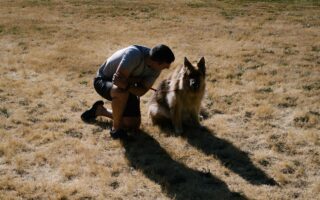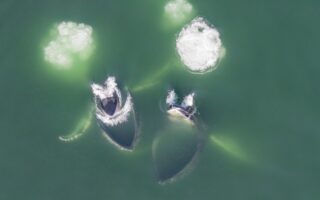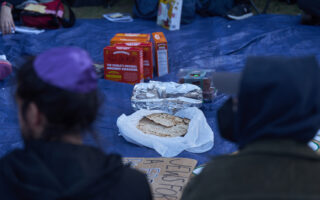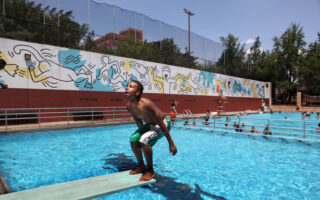A remote island draws thousands of turtles each year. Could it attract tourists?
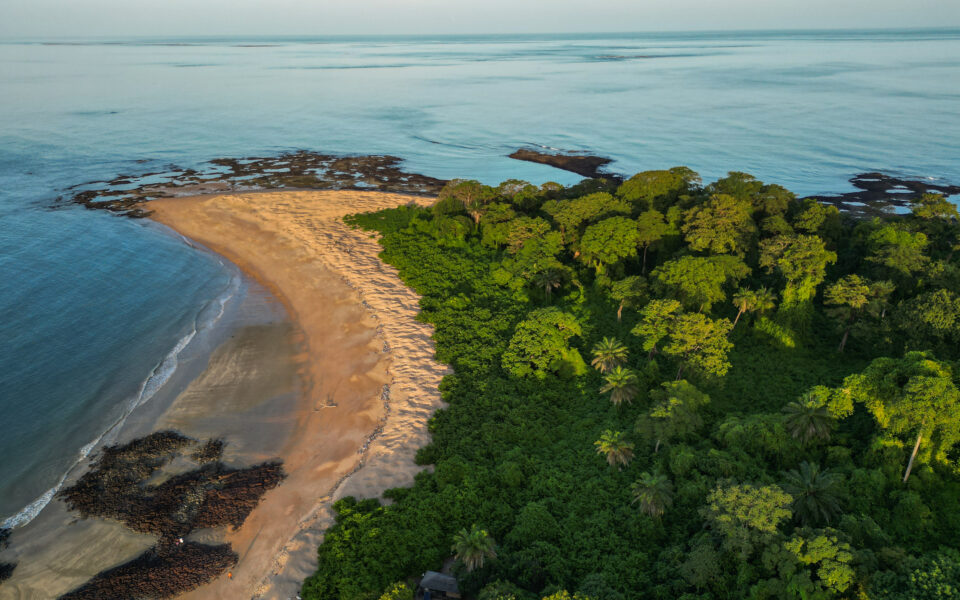
Each year, thousands of baby green sea turtles clamber across a beautiful, white-sand paradise that is one of the largest hatching sites of this species in the Atlantic, adorably making their way to the sea. There’s one noticeable absence: people.
The spectacular hatching events take place between August and December on Poilão Island, a tiny, uninhabited speck off the coast of Guinea-Bissau in West Africa. It is the southernmost island of the 88 that make up the Bijagós archipelago, a UNESCO biosphere reserve. Last year, turtles laid more than 44,000 nests on its 1.4 mile-long beach.
While the masses of turtles seem to have little trouble finding the spot to lay their eggs – some swim more than 600 miles across the North Atlantic – it’s hard to imagine somewhere more challenging for human turtle-lovers to reach.
The country’s tourism minister, Alberto Demba Touré, said that access is a main challenge. “We want to increase the tourists who go to the Bijagós,” he said. Last year, UNESCO declared its support for the Bijagós Islands to seek World Heritage List status, which, if successful, would increase its visibility and strengthen its environmental protections.
Turtle conservation programs have become a staple of resorts in many popular destinations, including in Hawaii, Mexico and throughout the Caribbean. Guinea-Bissau may like to capture a meager sliver of that pie, but it would be with steep challenges.
Politically fragile Guinea-Bissau has very little infrastructure and is one of the world’s poorest and least touristed nations. Most flights to Bissau, the country’s sleepy capital on the mainland, require a connection in Lisbon, Portugal, or Dakar, Senegal. Then, from Bissau, it’s a bumpy one-hour drive to the coast, and five to seven hours in a speedboat (depending on the route) to Poilão Island.
A limited number of tourists, usually no more than a dozen at a time, are allowed to visit the Poilão Island, which is part of the João Vieira and Poilão Marine National Park. The island is considered sacred by the archipelago’s residents and no construction is allowed on it.
A Plane, to a truck, to a speedboat
Last fall I traveled to Poilão at the height of hatching season to witness the baby turtles make their way from nest to sea, and to see how the local workers monitor and ensure the survival of the tens of thousands of hatchlings each year.
I started in Bissau, a riverside city of a half-million, after flying there from my home in Dakar.
A few blocks from the presidential palace, people sat at plastic tables under mango trees, listening to music and eating grilled oysters plucked from the roots of the nearby mangroves. Women walked by selling cashew fruit, which has a sour, fermented aroma.
Visitors to Bissau might visit the war museum, in an 18th-century fort and an active military base, to see the mainly Soviet-sponsored weapons used by Bissau-Guinean fighters during the independence war against their Portuguese rulers that ended in 1974.
The next morning, another visitor and I climbed into a truck that took us to the coast. I had booked my Poilão trip with a hotel on one of the islands, Orango Parque Hotel, which arranged boat transport, park fees, meals, a guide and simple accommodations for three nights. The whole arrangement cost about $1,470.
We left the capital’s main paved avenue for potholed small lanes. An hour later, we reached the dock, near an abandoned hotel among the mangroves, where I climbed into a white speedboat.
For three hours, we sped through the open ocean, passing small, mostly uninhabited islands of the Bijagós. We occasionally passed fishermen – a half-dozen men in brightly painted, long wooden boats – who waved as we buzzed by.
A stop to meet the priestesses
Eventually, we landed on a beach at the hotel on Orango Island, the largest in the archipelago, where we would spend two nights before continuing the journey. We were shown to our small round houses that contained a single comfortable room, and given a lunch of fresh fish and rice.
Eduardo da Silva, a boat captain and guide at the hotel who grew up on the island, said tourists can learn a lot from the way Bijagós residents interact with nature.
“On Orango, we have always been conservationists,” he said.
One day during my stay, da Silva took me to meet the local priestesses. Orango is a matriarchal society; today the priestesses still make decisions about when certain harvests take place and what is allowed to happen on sacred grounds. I offered the women two unlabeled, neon-green bottles of cana, alcohol made from sugar cane, which I had bought for this purpose from a roadside stand when leaving Bissau. After a short ceremony with the cana, the priestesses spoke about how they base their community decisions on what will ensure a continued balance with the environment.
“Conservation can protect what is ours, so that we don’t lose it and so that our children who are born tomorrow can know it,” said Nene Ecane, one of the priestesses, in the Bijagós language via a translator.
Landing on Poilão
When it was time to leave Orango, another speedboat – smaller than the one the day before – drove us through clear waters for two hours. We spotted dolphins and da Silva banged his hand on the side of the boat. The dolphins came closer and jumped alongside us.
While most of the speedboat journey from Bissau had been smooth, near Poilão the boat hit rougher waves. It was just before sunset when we landed. Occasional patches of volcanic black rocks, vital for green sea turtles, dotted the small beach.
As we unloaded the boat, a half-dozen workers from the João Vieira and Poilão Marine National Park greeted us, including Tumbulo Garcia Bamba, the park’s adjunct director.
“It’s good for tourists to come and learn and see how we work here for the turtles,” he said. He said he hopes that more attention to the turtles of Poilão will lead people outside of the region to respect the environment.
Bamba said he had noticed more trash washing up on the island’s shores; the Orango hotel scheduled a clean-up crew for the following week, which is not normally needed. Workers on the islands said many of the products seen among the trash – including bottled water and cosmetics – were not available in Guinea-Bissau and may have come from other parts of West Africa.
“The ocean knows no borders,” Bamba said.
A mad dash to the sea
Other than our individual tents, which were set up a few dozen feet from the beach, there were few other signs of human life. There is no cell reception.
But we were not alone. All along the beach lay thousands of buried turtle eggs. Every few steps there was another underground sea turtle hatchling family, the park workers told us. Many nests had markers, but not all. We walked gingerly.
The workers, many of whom are from the Bijagós Islands, not only count and monitor the hatchlings, but also help them make their way safely to the sea.
Even though the nests are just 20 or so feet from the ocean, the 2-inch-long hatchlings are susceptible to many threats during their brief journey to the water – specifically birds, which wait in the nearby trees ready to snatch them.
We followed the workers throughout the early evening as they dug up nests – sometimes they were chest-deep in sand. They gathered dozens of just-hatched turtles into buckets and held them at the campsite until nightfall and high tide, when it was safer to release them.
A few hours later, in the darkness, the workers took the buckets of turtles back to the beach and let them go. All at once, a few hundred small hatchlings made their mad dash for the safety of the sea. Under the starlight, they used their small front flippers to quickly – and adorably – push their way through the sand to the water.
After the sea turtle release, we sat down for a fresh fish dinner, grilled over an open fire by the hotel staff. The park workers ate next to us, all of us using headlamps and flashlights in the dark.
A laptop, powered by solar panels, blasted a playlist of ’90s and early 2000s love ballads as our dinner soundtrack, giving the evening a surreal feel. It was just us, Usher, Whitney Houston, Mariah Carey and, beneath a few feet of sand, thousands of baby turtles waiting for their first swim through the waves.
This article originally appeared in The New York Times.


